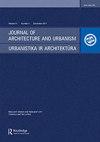JAVANESE ISLAMIC ARCHITECTURE: ADOPTION AND ADAPTATION OF JAVANESE AND HINDU-BUDDHIST CULTURES IN INDONESIA
IF 0.8
0 ARCHITECTURE
引用次数: 7
Abstract
Javanese Islamic architecture appears to be highly influenced by previous cultures, even though Islam has brought a new civilisation since the 13th century in Indonesia. The classical mosques and houses seem to follow Javanese and Hindu-Buddhist principles in their buildings, elements and spatial arrangements. This paper examines how the Javanese adapted their architecture to meet Islamic values while preserving their previous traditions. The concept of architectural synchronisation in Javanese architecture is examined from the traces observed in the temple dioramas, depictions of contemporary cultural products, and several traditional buildings. The adoptions and adaptations that appear in some significant objects such as old mosques and houses are traced back to previous transformation principles. Architectural harmonisation for new needs seemingly bases on religion as the most potent driving aspect. However, what is interesting is that in the case of Java, embracing a new religion does not mean forgetting existing traditions. On the other hand, the principle of acculturation has created a peaceful transition in architecture. Some evidence suggests that Javanese high culture, such as the classical grand mosque and the joglo house, succeeded in translating Javanese and Hindu-Buddhist ideas into Islamic architecture in very distinctive ways.爪哇伊斯兰建筑:爪哇和印度教佛教文化在印度尼西亚的采用和适应
爪哇的伊斯兰建筑似乎深受先前文化的影响,尽管伊斯兰教自13世纪以来为印度尼西亚带来了一种新的文明。古典的清真寺和房屋在建筑、元素和空间安排上似乎遵循爪哇和印度教-佛教的原则。本文探讨爪哇人如何在保留原有传统的同时,调整他们的建筑以符合伊斯兰价值观。爪哇建筑中建筑同步的概念是通过观察寺庙的立体模型、当代文化产品的描绘和一些传统建筑的痕迹来研究的。在一些重要的对象中出现的采用和适应,如古老的清真寺和房屋,可以追溯到以前的改造原则。新需求的建筑协调似乎基于宗教作为最有力的驱动因素。然而,有趣的是,在爪哇,信奉一种新的宗教并不意味着忘记现有的传统。另一方面,文化适应的原则为建筑创造了一个和平的过渡。一些证据表明,爪哇的高级文化,如古典的大清真寺和joglo house,成功地以非常独特的方式将爪哇和印度教-佛教的思想转化为伊斯兰建筑。
本文章由计算机程序翻译,如有差异,请以英文原文为准。
求助全文
约1分钟内获得全文
求助全文
来源期刊

Journal of Architecture and Urbanism
ARCHITECTURE-
CiteScore
1.30
自引率
14.30%
发文量
12
审稿时长
15 weeks
期刊介绍:
The Journal of Architecture and Urbanism publishes original research on all aspects of urban architecture.
 求助内容:
求助内容: 应助结果提醒方式:
应助结果提醒方式:


